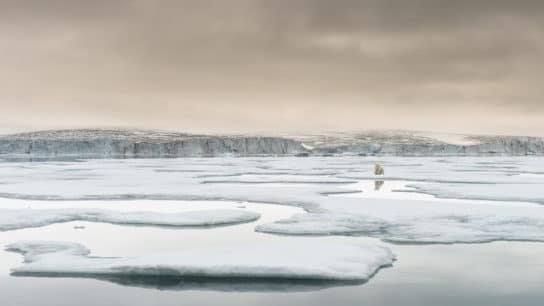African countries grappled with unprecedented flooding, persistent droughts and water scarcity in 2024, the World Meteorological Organization said on Monday.
—
Human-made climate change is wreaking havoc across Africa, impacting every aspect of socio-economic development and exacerbating food and water insecurity, according to a new report.
Africa just endured its hottest or second-hottest year on record, depending on the dataset, bookending the continent’s warmest decade on record, according to the World Meteorological Organization’s (WMO) State of the Climate in Africa 2024 report. Sea temperatures, particularly in the Atlantic Ocean and the Mediterranean Sea, were also abnormally high and rapidly rising.
Published Monday, the study also looked at extreme weather events affecting dozens of African countries last year, which are increasing in both frequency and intensity globally because of human-induced greenhouse gas emissions.
These events are affecting socio-economic development in Africa, WMO warned, disrupting agriculture and energy supplies, increasing food and water insecurity, and threatening health and education for millions of people.

Between March and May 2024, for example, floods and landslides triggered by exceptional rainfall killed hundreds of people lost their lives and displaced more than 700,000 in Kenya, Tanzania, Burundi and other parts of East Africa. In May, East Africa’s first-of-its-kind cyclone brought more torrential rain and high-speed winds to the already heavy-battered region, resulting in further casualties and displacements.
Meanwhile, widespread and prolonged drought conditions led to the worst electricity blackouts in living memory in Zambia in October, with neighboring Zimbabwe and Malawi also badly affected. In Lake Kariba, the world’s largest artificial lake located along the border between Zambia and Zimbabwe, waters last year reached critically low levels, affecting hydroelectric power generation and triggering prolonged blackouts and economic disruptions. Zambia sources up to 84% of its electricity from water reservoirs like lakes and rivers.
Climate-related disasters such as droughts and floods are driving increasing displacement across the African continent, with the number of internally displaced people now six times higher than 15 years ago, according to a report by the Internal Displacement Monitoring Centre published in November.

Escalating Situation
Last February, the Center for Global Development (CGD) warned that more than 200 million people across Africa could face extreme hunger and undernourishment in the long run as extreme weather events impact crop yields and farmland value. Meanwhile, droughts are likely going to push more than 50 million people into water distress, according to the CGD.
It found that agricultural production in Africa could experience losses of up to 2.9% by 2030 and 18% by mid-century, while the value of farmland to drop anywhere between 36% and 61%.
Climate change is also expected to deepen poverty, with the continent’s average per capita GDP projected to drop by 7.1% in the long term and country-level GDP losses estimated at 11.2% to 26.6%. Across the continent, poverty is expected to affect households that work in the agricultural sector the most, with revenue from crops likely to drop by 30% and poverty expected to rise anywhere between 20% and 30% when compared to a no-climate-change scenario.
Global Pledges Fall Short
WMO Secretary-General Celeste Saulo on Monday warned that early warnings and climate adaptation must be scaled up “to address the increasingly complex challenges and cascading impacts” of climate change in Africa, adding that the situation was “urgent and escalating.”
According to the report, National Meteorological and Hydrological Services (NMHSs) across several African countries are leveraging artificial intelligence to monitor and predict localized weather hazards more effectively, and are utilizing mobile applications, SMS alerts, community radio systems, and other communication platforms to reach even the most remote communities.
Countries like Nigeria and Kenya are leading the way, using digital platforms such as mobile applications, cell broadcast, SMS alerts, and community radio systems to provide crucial weather information to sectors like agriculture and fishing. Meanwhile, South Africa is relying on AI-based forecasting tools and modern radar systems for effective and timely weather predictions.
In 2024, 18 NMHSs across Africa upgraded their websites and digital communication systems with support from the WMO, enhancing their services, products, and warnings.
Featured image: Climate Centre/Flickr.
This story is funded by readers like you
Our non-profit newsroom provides climate coverage free of charge and advertising. Your one-off or monthly donations play a crucial role in supporting our operations, expanding our reach, and maintaining our editorial independence.
About EO | Mission Statement | Impact & Reach | Write for us















